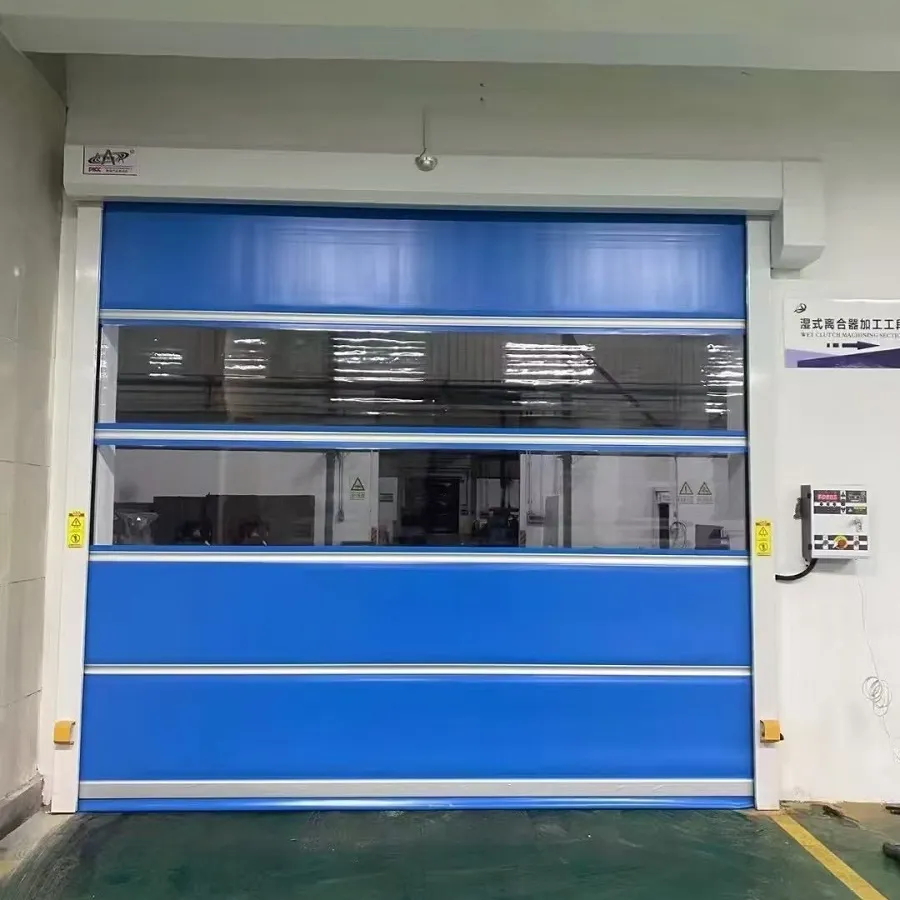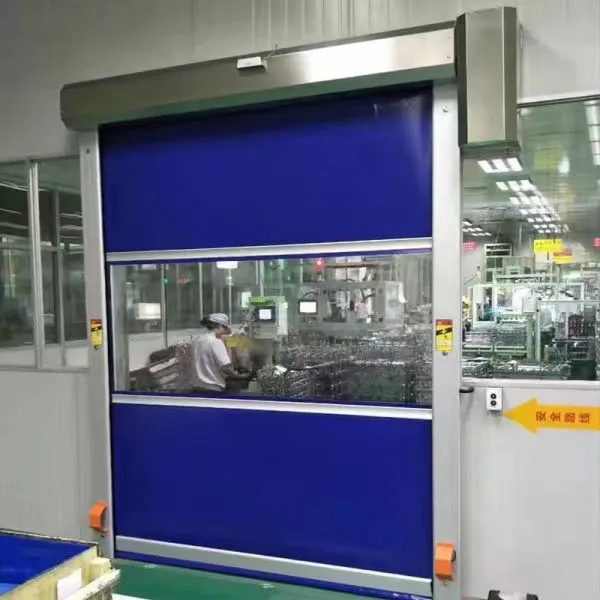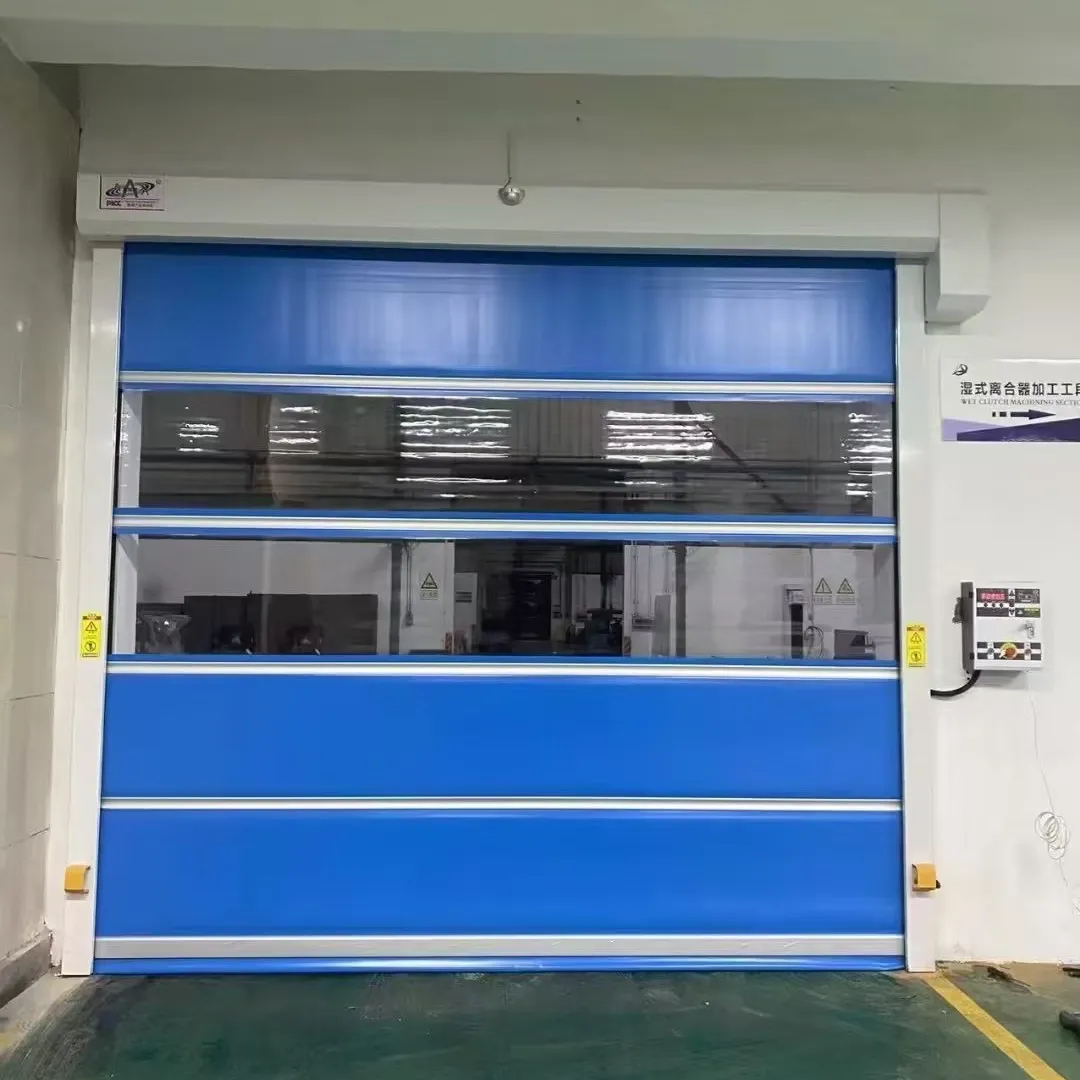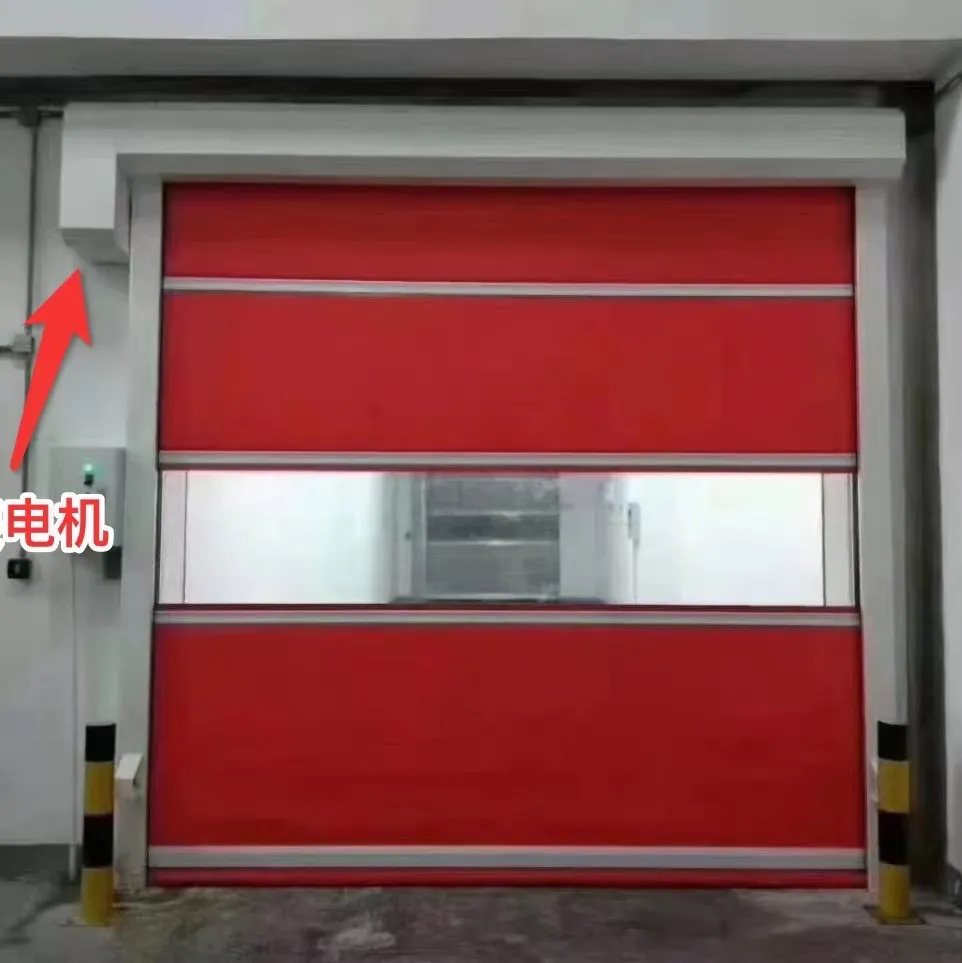Reliable guardian of modern industry and commerce: Electric rolling shutter door
In modern industrial and commercial environment, efficient, safe and convenient entrance and exit management is essential. Electric rolling shutter door with its excellent performance and wide applicability has become an indispensable and important part of all kinds of places. It not only improves the operation efficiency of the entrance and exit, but also plays a key role in safety protection, energy saving and environmental protection. This article will conduct an in-depth discussion on the structure, working principle, characteristics, application field and future development trend of electric rolling shutter door.
First, the structure of electric rolling shutter door
Electric rolling shutter door is not a simple door body, but a complex system composed of multiple precision components. Its main structure includes:
Door body curtain: This is the key component that constitutes the main part of the rolling shutter door. The curtain is usually made of high-strength metal materials (such as galvanized steel plate, color steel plate, aluminum alloy, etc.), and has a certain arc and strength after cold rolling. The connection methods of the curtain are various. The common ones are bite type, lap type, etc., to ensure the integrity and sealing of the door body. According to different needs, the curtain can also be designed as a single-layer, double-layer hollow or filled thermal insulation material to meet special requirements such as sound insulation and thermal insulation.
Drive motor: the "heart" of the electric rolling shutter door, which provides power for the lifting of the door body. The motor is usually a deceleration motor, which transmits power to the reel through a transmission mechanism such as a gear or a chain. The power of the motor is selected according to factors such as the size, weight and frequency of use of the door body, and is equipped with an overload protection device to ensure safe operation.
Control System: The "brain" that controls the operation of the electric rolling shutter door. The control system of modern electric rolling shutter doors is becoming increasingly intelligent. Common control methods include:
Button Control: The most basic operation mode, the door is raised, lowered and stopped through buttons installed on the wall or control box. Remote Control: Remote operation through a wireless remote control, which is convenient and fast, especially suitable for places where vehicles or people frequently enter and exit. Induction Control: Use infrared, microwave and other sensors to detect the approach of people or vehicles, and automatically open the door body to improve traffic efficiency. Linkage Control: It can be linked with other security systems (such as access control system, fire alarm system, etc.) to achieve a higher level of automation management and security. Intelligent Control: With the development of Internet of Things technology, some high-end electric rolling shutter doors have mobile APP control, cloud platform management and other functions, which is convenient for users to remotely monitor and operate. Reel and Balance System: Reel is a cylindrical part of the curtain of the winding door body. It is usually made of steel pipe or alloy material and has sufficient strength and stiffness. The balance system (such as torsion spring balance or counterweight balance) is used to offset part of the weight of the door body, reduce the load of the motor, and make the door body run more smoothly and smoothly.
Guide rail: A track installed on both sides of the door opening to guide the door body curtain to run up and down. The material and structure of the guide rail directly affect the running smoothness and sealing of the door body. In order to improve the sealing, a sealing strip is usually installed on the inside of the guide rail.
Limiting device: It is used to control the limit position of the door body rising and falling, to prevent the motor from overloading or the door body from punching the top/bottom. Limiting device is usually realized by mechanical or electronic means to ensure that the door body operates within a safe range.
Safety Protection Device: In order to ensure the safety of personnel and equipment, electric rolling shutter doors are usually equipped with a variety of safety protection devices, such as:
Infrared Safety Protection: During the descent of the door body, if there is an obstacle blocking below, the infrared sensor will detect and issue a signal to control the door body to stop falling or rebound. Airbag Safety Protection: A flexible airbag is installed at the bottom of the door body. When the door body descends and encounters an obstacle, the airbag is compressed and deformed, triggering the protection device to stop or rebound the door body. Anti-fall device: When the motor or transmission system fails, it prevents the door body from suddenly falling, causing a safety accident. Second, the working principle of the electric rolling shutter door
The working principle of the electric rolling shutter door is relatively simple and efficient. When the signal of opening or closing is received, the control system will drive the motor to rotate forward or reverse. The rotation of the motor is transmitted to the reel through the transmission mechanism (such as gear, chain or belt), which drives the reel to rotate, so as to realize the winding or unfolding of the door body curtain.
During the opening process, the curtain is driven by the motor and wound up to the reel along the guide rail until the preset upper limit is reached. During the closing process, the curtain is under the action of gravity (or under the reverse drive of the motor) and unfolds down along the guide rail until the preset lower limit is reached. The function of the limiting device is to ensure the safe operation of the door body within the set range and prevent over-winding or over-discharge.
The function of the balance system is to balance the weight of the door body, reduce the load of the motor during the lifting process, make the door body run more smoothly, less noise, and prolong the service life of the motor.
Third, the characteristics and advantages of the electric rolling shutter door
The reason why the electric rolling shutter door has been widely used in many places is due to its significant characteristics and advantages:
Convenient and efficient: The electric control greatly improves the switching speed and operation convenience of the door body, especially suitable for places that need frequent access, such as factories, warehouses, parking lots, etc. A variety of control methods such as remote control and induction further enhance the convenience of use.
Safe and reliable: The door body made of high-strength metal materials has good anti-theft performance. Equipped with a variety of safety protection devices, such as infrared rays, airbags, anti-fall, etc., effectively ensure the safety of personnel and equipment.
Space-saving: When the rolling shutter door is opened, the door body is wound above the reel, which does not occupy the space on both sides of the door opening. It is especially suitable for places with limited space.
Good sealing: Compact structure, tight connection between the curtain sheets, with guide rails and sealing strips, it can effectively block dust, noise and airflow, providing a good indoor environment.
Sturdy and durable: Made of high-quality materials and advanced technology, it has a long service life and low maintenance costs.
Beautiful and generous: Modern electric rolling shutter doors pay more attention to aesthetics in appearance design, providing a variety of colors and styles of choice, which can be coordinated with the architectural style.
Multi-functional: According to different needs, you can choose electric rolling shutter doors with special functions such as thermal insulation, fire protection and explosion-proof.
Four, the application field of electric rolling shutter doors
With its many advantages, electric rolling shutter doors are widely used in various fields:
Industrial plant: As the main choice of the entrance and exit of the workshop, warehouse, etc., to facilitate the entry and exit of large equipment and goods, and to provide security protection.
Commercial places: Suitable for shops, supermarkets, banks, hospitals and other places, to provide convenient access, and play the role of anti-theft and isolation.
Parking lot: As a control device for the entrance and exit of the parking lot, cooperate with the gate system to realize the automatic management of vehicles.
Logistics and warehousing: In logistics centers, warehouses and other places, it is used to open and close the door quickly and efficiently to improve logistics efficiency.
Special places: Fire shutter doors are used in fire zones to isolate the fire when a fire occurs; Explosion-proof shutter doors are used in flammable and explosive places to ensure safety.
Five, the development trend of electric rolling shutter doors
With the continuous development of science and technology, electric rolling shutter doors are also developing in the direction of intelligence, integration and environmental protection:
Intelligent: The application of more intelligent control technologies, such as facial recognition, license plate recognition, Internet of Things remote control, etc., will further enhance the automation management level and user experience of electric rolling shutter doors.
Integration: Electric rolling shutter doors will be more integrated with other building intelligent systems, such as security monitoring systems, fire alarm systems, building automatic control systems, etc., to achieve more comprehensive intelligent management.
Environmental Protection: The use of more environmentally friendly materials and more energy-saving motors will reduce energy consumption and environmental pollution. At the same time, the application of lightweight and high-strength materials will also reduce the consumption of resources.
Personalized Customization: With the diversification of market demand, electric rolling shutter doors will pay more attention to personalized customization to meet the special needs of different users, such as special sizes, colors, materials and functions.
Safety performance improvement: In the future, electric rolling shutter doors will invest more research and development in safety protection, using more advanced sensing technology and more reliable mechanical structure to further improve their safety performance.





